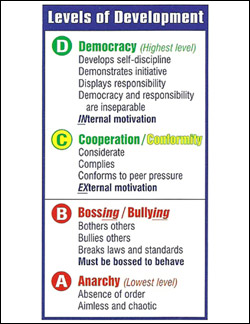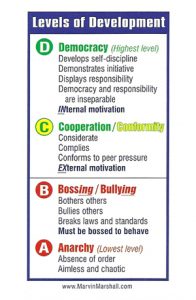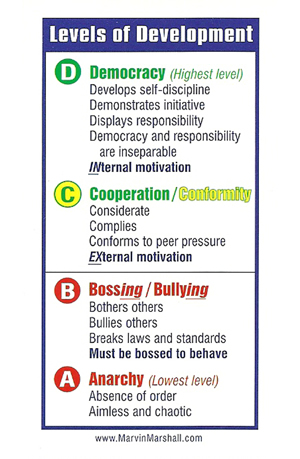
For years I’ve focused the teachings of my Levels of Development on students and schools. But in reality, the Levels of Development is a tool appropriate for every person of every age from every walk of life. In fact, when people become aware of the levels, they become conscious of their own behaviors, their decisions, and their relationships with others.
Here are the 4 main ways the Levels of Development helps all people.
1. Serves as a means of communication
The Levels of Development offers everyone—adults and youth—the same conceptual vocabulary. This helps bring clarity of understanding and assists communications between all people, whether it’s between a teacher and student, parent and child, or even two co-workers.
















